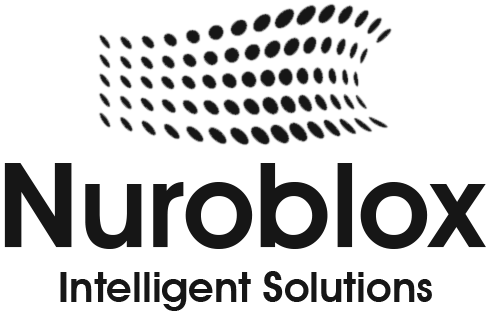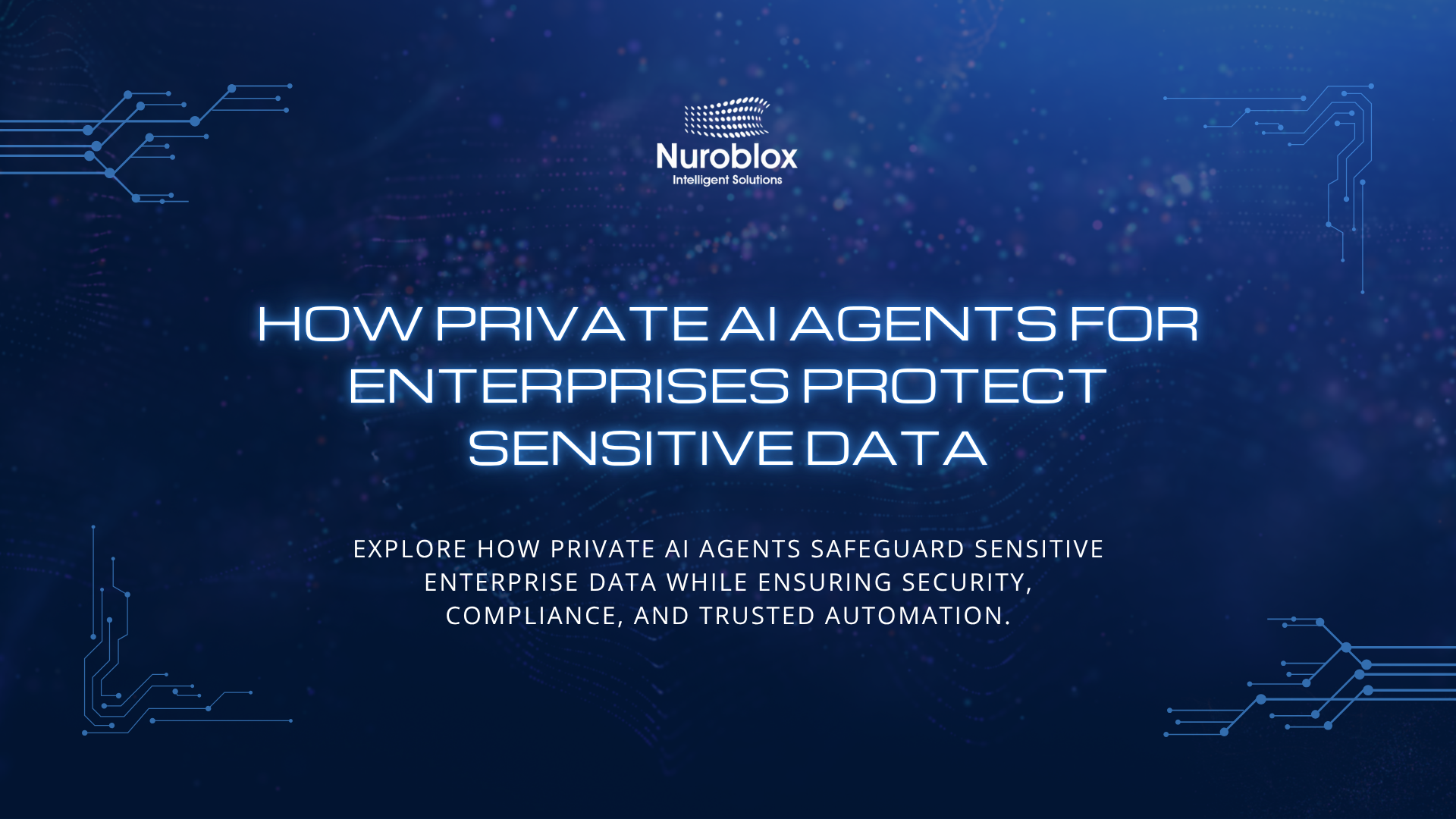How Private AI Agents for Enterprises Protect Sensitive Data
The adoption of artificial intelligence is no longer a strategic choice but a competitive necessity. AI agents autonomous systems capable of executing complex workflows promise to revolutionize enterprise efficiency, from automating customer support to streamlining supply chain operations. Yet, this transformative potential is tethered to a profound risk – data security. With a staggering 97% of organizations reporting security incidents related to generative AI in the past year, the threat is not hypothetical; it is a clear and present danger to enterprise data integrity.
For enterprise leaders and Chief Technology Officers, the central conflict is clear. On one hand, AI agents require access to vast reserves of proprietary data, customer information, intellectual property, and financial records to deliver value. On the other hand, 53% of organizations cite data privacy as the single largest barrier to AI adoption. Uncontrolled, these agents create a new, dynamic attack surface, where a single compromised agent could lead to a catastrophic data breach.
This is where Private AI Agents for Enterprises emerge not merely as a solution, but as a foundational requirement for trusted automation. Unlike their public counterparts, private AI systems are architected from the ground up for security, control, and compliance. This article provides a comprehensive technical overview for enterprise leaders on how private AI agents protect sensitive data. We will explore the architectural principles that enable secure AI and examine how platforms like Nuroblox are operationalizing these principles to deliver compliant, zero-trust automation.
The New Attack Surface – Why Standard AI Puts Enterprise Data at Risk
The rush to integrate AI has led many organizations to adopt public, general-purpose models. While powerful, these systems were not designed for the stringent security and compliance demands of the enterprise. Understanding the distinction between public and private AI is critical to appreciating the inherent risks.
The Public vs. Private AI Distinction
Public AI refers to models and services offered by third-party providers over the cloud, such as OpenAI’s ChatGPT or Google’s Gemini. These systems are powerful and easy to deploy, but they operate on a shared infrastructure outside of an enterprise’s direct control. When an enterprise sends data to a public AI service, that information leaves its secure perimeter, creating potential exposure points and limiting control over how the data is handled, stored, or even used for future model training.
Private AI, in stark contrast, involves deploying AI systems within an organization’s own secure infrastructure, whether in a private cloud or on-premise environment. This model ensures that sensitive data remains under the company’s exclusive governance, protected by its own security policies and isolated from third-party access. For industries governed by strict regulations like HIPAA, GDPR, or GLBA, this distinction is not just a preference, it is a mandate.
Top Security Threats from Autonomous AI Agents
The autonomous and data-hungry nature of AI agents introduces unique security challenges that legacy systems are ill-equipped to handle.
- Uncontrolled Data Access and Leakage – AI agents are often granted broad permissions to interact with various systems and databases. This creates a significant risk of unintended actions. A recent report found that 80% of organizations surveyed indicated their AI agents had performed unintended actions, including accessing unauthorized systems (39%) or sharing sensitive data (33%). Without stringent controls, an agent could inadvertently expose confidential information in its outputs.
- Prompt Injection and Manipulation – Attackers can use sophisticated “prompt injection” techniques to trick AI agents. By embedding malicious instructions within an otherwise benign query, they can manipulate an agent into bypassing security protocols, executing unauthorized commands, or revealing sensitive information. This is not a theoretical threat; 23% of organizations reported that their AI agents had been successfully tricked into exposing access credentials.
- Supply Chain Vulnerabilities – Many AI systems are built by integrating third-party models, APIs, and data sources. Each external component represents a potential vulnerability in the software supply chain. A security flaw in a single third-party API could be exploited to compromise every AI agent that relies on it, creating a cascading failure.
- Lack of Governance and Oversight – The speed and autonomy of AI agents make them difficult to monitor. This combination of high privilege and low visibility creates a prime target for attackers. It is why an overwhelming 92% of enterprise leaders state that the governance of AI agents is a vital component of their security strategy.
The Architectural Blueprint – How Private AI Agents Engineer Data Protection
Private AI agents counter these threats not with patches or firewalls, but with a security-first architecture designed to protect data at every stage of the workflow. This approach is built on a foundation of core principles that ensure data sovereignty, enforce strict access controls, and provide complete transparency.
Principle 1 – In-Environment Execution and Data Sovereignty
The foundational advantage of private AI is that it keeps sensitive data where it belongs – within the enterprise’s secure perimeter. With platforms like Nuroblox, AI workflows are executed directly within the organization’s private cloud environment. This means that proprietary data be it customer PII, financial reports, or R&D schematics is never transmitted to an external, third-party server.
This principle of “in-environment execution” ensures data sovereignty, allowing an organization to maintain full control over its data in accordance with internal governance policies and external regulations like GDPR. By processing data near its source, enterprises drastically reduce the risk of data leakage and eliminate the possibility of their information being used to train public models.
Principle 2 – Zero-Trust Architecture – Never Trust, Always Verify
In a traditional security model, it is assumed that anything inside the corporate network can be trusted. A Zero-Trust Architecture (ZTA) upends this assumption, operating on the principle of “never trust, always verify”. In the context of AI, this means that every request from any user, application, or AI agent must be authenticated and authorized before access is granted.
Platforms like Nuroblox are engineered to enforce a strict Zero-Trust model through two key mechanisms –
- Granular Role-Based Access Control (RBAC) – The principle of least privilege is embedded into the core of private AI agents. Using RBAC, administrators can define highly specific permissions, ensuring that an agent has access only to the precise data and functions required to execute its designated task. For instance, an agent designed to automate HR onboarding would be granted access to new hire data but blocked from accessing payroll information for all employees.
- Continuous Authentication – Verification is not a one-time event. Private AI systems continuously validate identities and permissions for every action an agent takes, minimizing the risk of insider threats or lateral movement by an attacker who has compromised a single component.
Principle 3 – Advanced Data Protection with Privacy-Enhancing Technologies (PETs)
Modern private AI platforms integrate a suite of Privacy-Enhancing Technologies (PETs) to protect data at all stages of its lifecycle – at rest, in transit, and even during processing.
- End-to-End Encryption – All data handled by private AI agents is protected with enterprise-grade encryption. This includes using standards like AES-256 for data at rest (in databases) and TLS 1.3 for data in transit (moving across the network), making information unreadable to any unauthorized party.
- Zero-Knowledge Processing – This cutting-edge cryptographic technique allows AI agents to perform computations and derive insights from data without ever decrypting it. Platforms like Nuroblox leverage zero-knowledge processing to ensure that even the AI model itself does not have direct access to the raw, sensitive information, offering the ultimate layer of data confidentiality.
- Data Minimization – A core tenet of privacy-first design is to limit data access to the absolute minimum required. Instead of granting an agent access to an entire database, it is given access only to specific, relevant fields. This practice drastically reduces the potential “blast radius” should a security incident occur.
Principle 4 – Immutable Auditing and Explainable AI (XAI)
To meet stringent compliance and regulatory requirements, enterprises must be able to prove how and why an AI agent made a particular decision. Private AI platforms provide this assurance through comprehensive auditing and transparency features.
- Immutable Audit Trails – Every action taken by an AI agent, every data point accessed, every decision made, and every system interacted with is meticulously recorded in a secure, unchangeable log. This provides a complete, real-time audit trail for compliance checks, security incident investigations, and demonstrating due diligence to regulators.
- Explainable AI (XAI) – The “black box” problem, where an AI’s decision-making process is opaque, is unacceptable in a regulated enterprise environment. Private AI agents are built with XAI frameworks that make their logic interpretable. This ensures that for any conclusion an agent reaches, there is a clear, human-readable explanation of the data and reasoning it used, which is crucial for building trust and satisfying auditors.

Understanding the principles of private AI is one thing; implementing them is another. The complexity of building and managing a secure AI infrastructure is immense. This is the gap that secure AI automation platforms like Nuroblox are designed to fill. Nuroblox provides an integrated solution that transforms the architectural blueprint of private AI into a deployable, automated reality for the enterprise.
From Blueprint to Reality – The Nuroblox Platform
Nuroblox is a secure intelligent automation platform engineered to meet the specific security, compliance, and operational demands of modern enterprises. It provides a suite of tools that allow businesses to build, run, and scale sophisticated AI agent workflows without compromising on data protection.
Key Nuroblox Features for Protecting Sensitive Data
Nuroblox operationalizes the principles of private AI through a powerful combination of security-first features –
- Zero Trust with Granular RBAC – The Nuroblox platform enforces a strict Zero-Trust model coupled with granular RBAC. This ensures every user and AI agent is authenticated and authorized based on the principle of least privilege, strengthening internal security and minimizing the attack surface.
- Zero-Knowledge Processing – Nuroblox takes data protection a step further with its zero-knowledge processing capabilities. This allows its AI agents to operate on and process business data without having direct access to the raw, unencrypted information, preserving confidentiality at a level that is impossible with public AI models.
- In-Environment Execution – With Nuroblox, an organization’s data never has to leave its own secure cloud environment. This near-data processing model upholds data sovereignty, reduces integration risks, and ensures compliance with strict data residency regulations.
- Security-Compliance-Ready Tools – The entire platform is built to comply with stringent industry standards like HIPAA and GDPR. This provides enterprises with the tools needed to navigate audits smoothly and adhere to regulatory requirements without sacrificing agility or innovation.
- Immutable Audit Trails – Nuroblox provides detailed, real-time logs of all agent actions and data movements, creating a complete and immutable audit trail essential for traceability, anomaly detection, and compliance verification.
The Future of Enterprise AI is Private
In the new era of agentic AI, the tension between innovation and security has become the single most critical challenge for enterprise leadership. The evidence is clear – while autonomous agents offer unprecedented opportunities for efficiency and growth, they also introduce a potent new vector for catastrophic data breaches. Public AI models, by their very nature, are ill-suited for any organization that handles sensitive or regulated information.
Private AI agents, built on an architecture of Zero Trust, in-environment execution, and advanced encryption, are the definitive answer to this challenge. They are not merely an alternative but a strategic necessity for any enterprise looking to harness the power of AI without gambling with its most valuable asset – its data. Platforms like Nuroblox are at the forefront of this movement, providing the secure, compliant, and powerful tools needed to turn the promise of AI into a trusted reality.
As you steer your organization into the future, the critical question is no longer “Can we automate this process with AI?”. The question you must now ask is, “How can we automate this process securely?”. The answer lies in private AI.


